Stir-Fry is one of the most popular Chinese dishes. But it is also known to be very high in sodium. This Chinese inspired low sodium chicken stir-fry is not only easy to make but also incredibly versatile. And just wait until you see how low sodium this recipe is compared to other recipes and restaurants!
Brimming with juicy, velvety chicken, an array of colorful veggies, and a savory-sweet sauce all coming together in a hot wok, perfect for any night of the week. With just a wok or skillet and the ingredients listed below, you can have this mouthwatering dish ready in about 30 minutes.
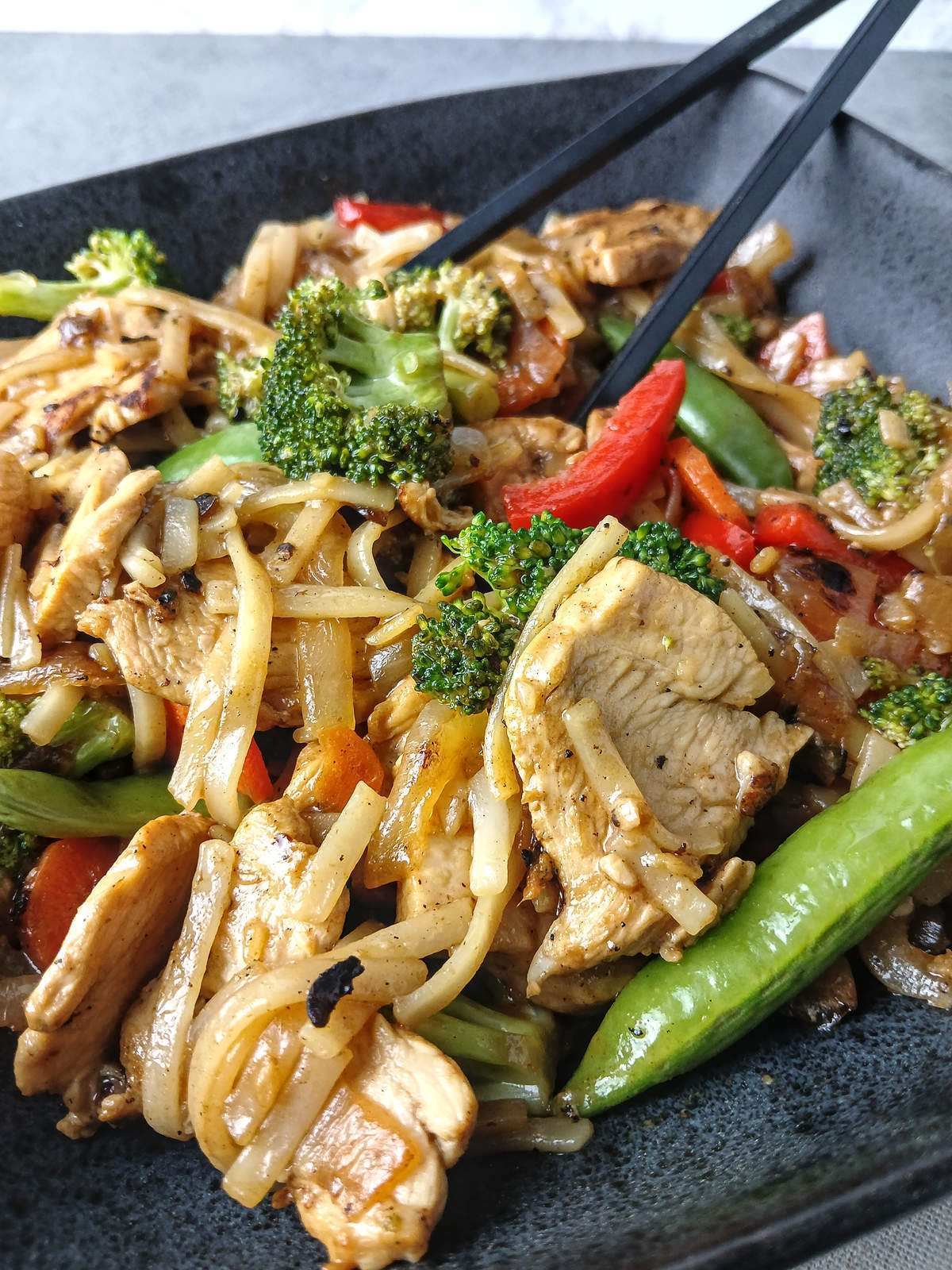
I missed having a good stir-fry from the local takeout and made it (high sodium version) often before starting a low sodium diet. It delivers flavor, simplicity and a healthy balance of protein and veggies. Plus, I found the stir-frying method to be a fun different way of cooking. This was definitely a recipe I wanted to make low sodium, I think it turned out rather well.
This low sodium stir fry can be just a toss-together of lots of veggies and chicken. You can use a variety of your favorite vegetables. It’s also great for using up any leftover veggies. But let’s start with this classic version and you can experiment from there.
Sodium in low sodium chicken stir fry compared:
The key to an insanely good stir-fry is the sauce. And it is that sauce causing the very high sodium level in most recipes and restaurants.
| Typical sodium amount per serving | 700+ mg |
| Sodium per serving for this recipe | 230 mg |
| Calories per serving | 488 |
| Makes 4 = servings | 1 |
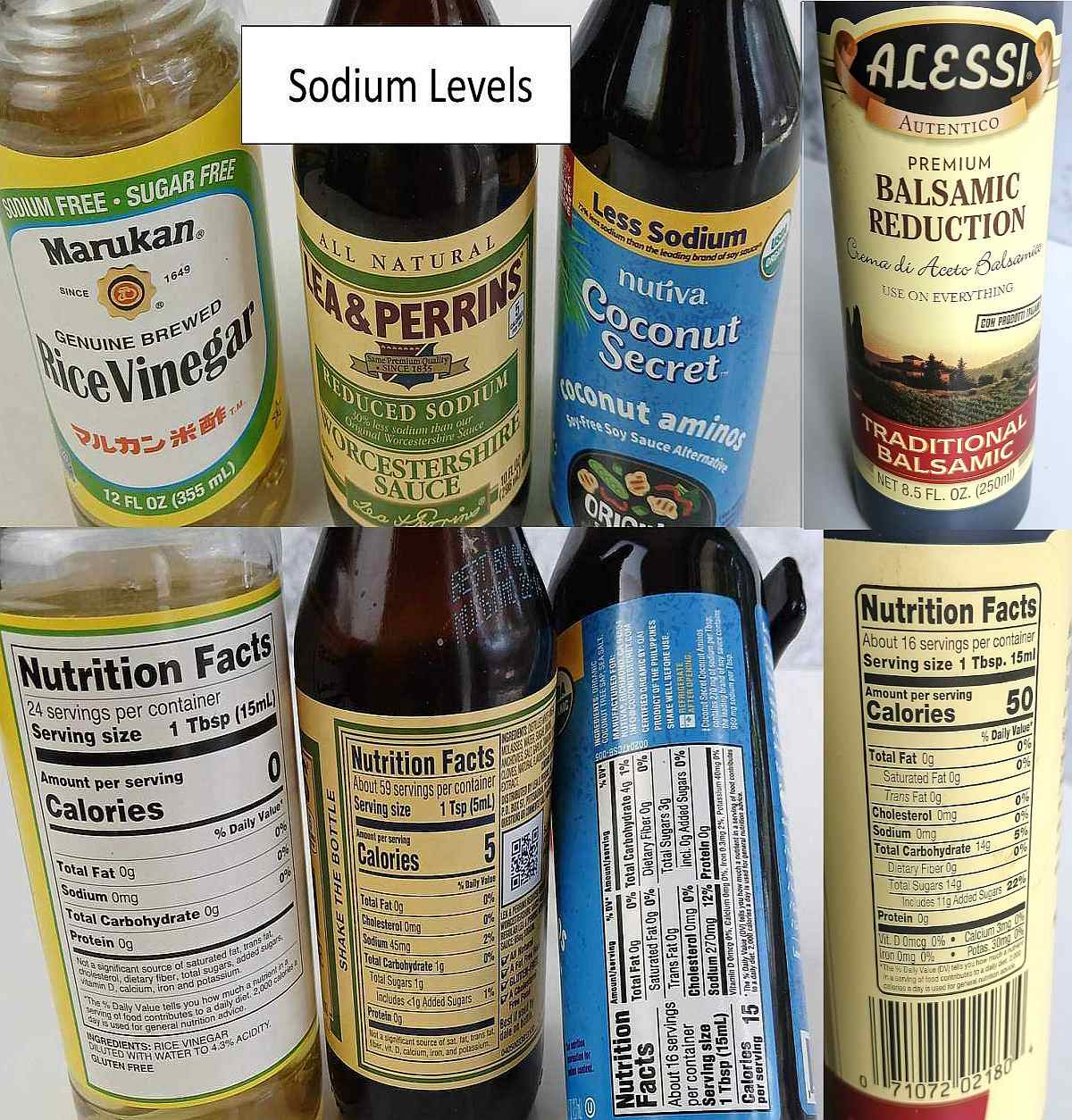
I read recipes that ranged anywhere from 350mg (not bad) with most all the way up to 1500mg of sodium per serving. After much comparing of products and testing I was able to pare down the sodium to 230 milligrams!! Oddly enough, it’s the chicken that contributes a good portion of the sodium in this recipe.
The largest sodium savings come from using coconut aminos, balsamic reduction, and reduced sodium Worcestershire sauce to replace the sodium-packed “soy” type sauces generally used. Thus, greatly reducing the sodium levels to something we can work with.
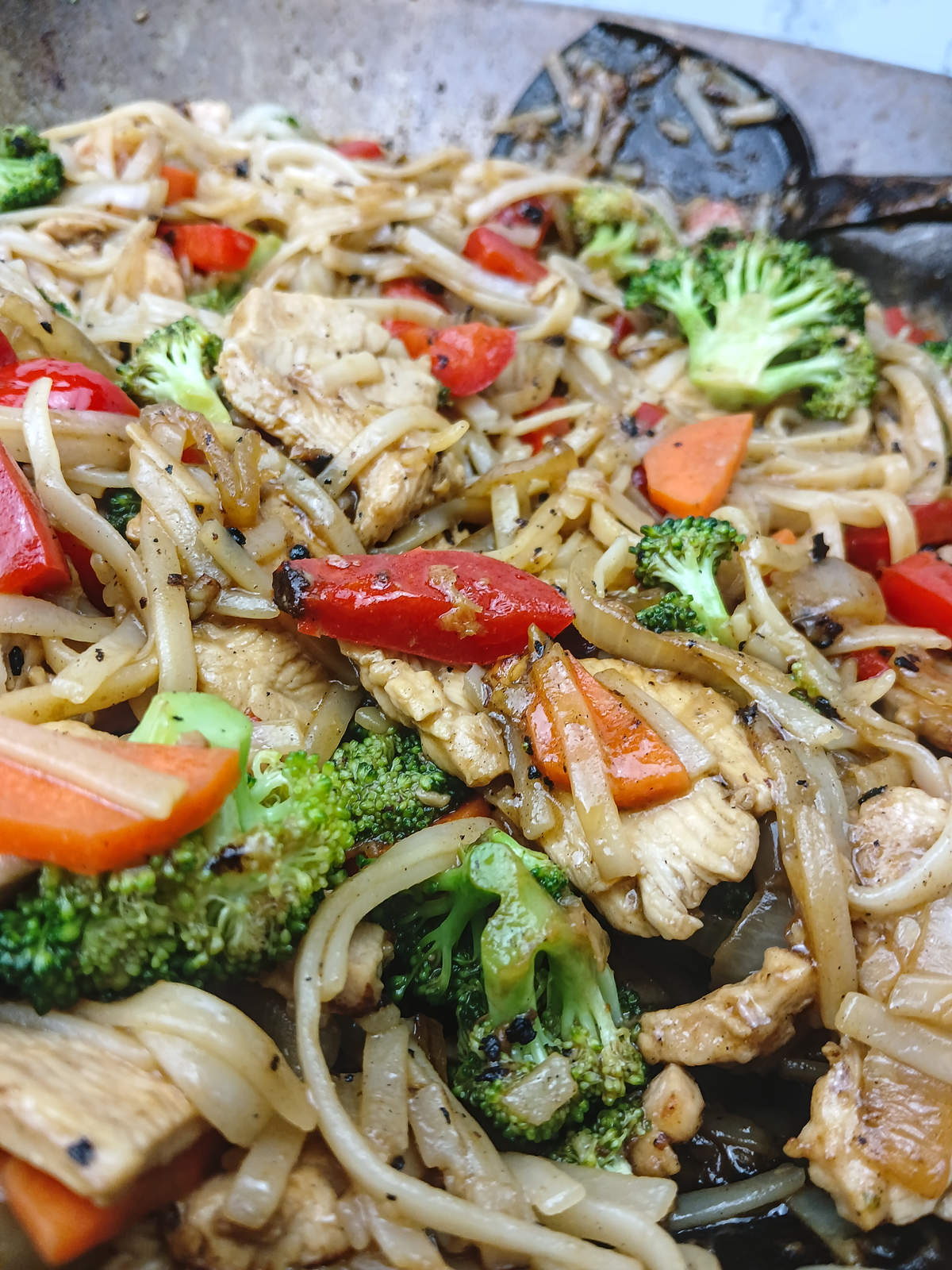
Ingredients

Chicken Stir Fry Main Ingredients:
- Rice noodles – You can omit noodles if you’re going to serve over rice.
- Skinless boneless chicken breasts – partially frozen to firm to be easily sliced 1/4” thin bite-sized strips.
- Avacado oil – A high smoke point oil for stir frying the chicken.
- Red bell pepper – Red bell peppers are ideal for having a subtle sweetness and vibrant color pop. But any color will work.
- Snow peas – I like them for their tasty pop and I think all stir fries should include them!
- Carrot – For fun cut long ways diagonally or use a crinkle-cut wavy slicer but thinly sliced.
- Broccoli florets – For a pop of green cut into bite-sized pieces.
- Onion – White or yellow onions, either will work for this recipe.
- Pre-minced garlic & fresh ginger peeled and grated – The fundamental aromatics for any stir-fry recipe.
- shiitake or portobello mushroom – Optional, but if you’re a fan go ahead and use them for a more uname taste.
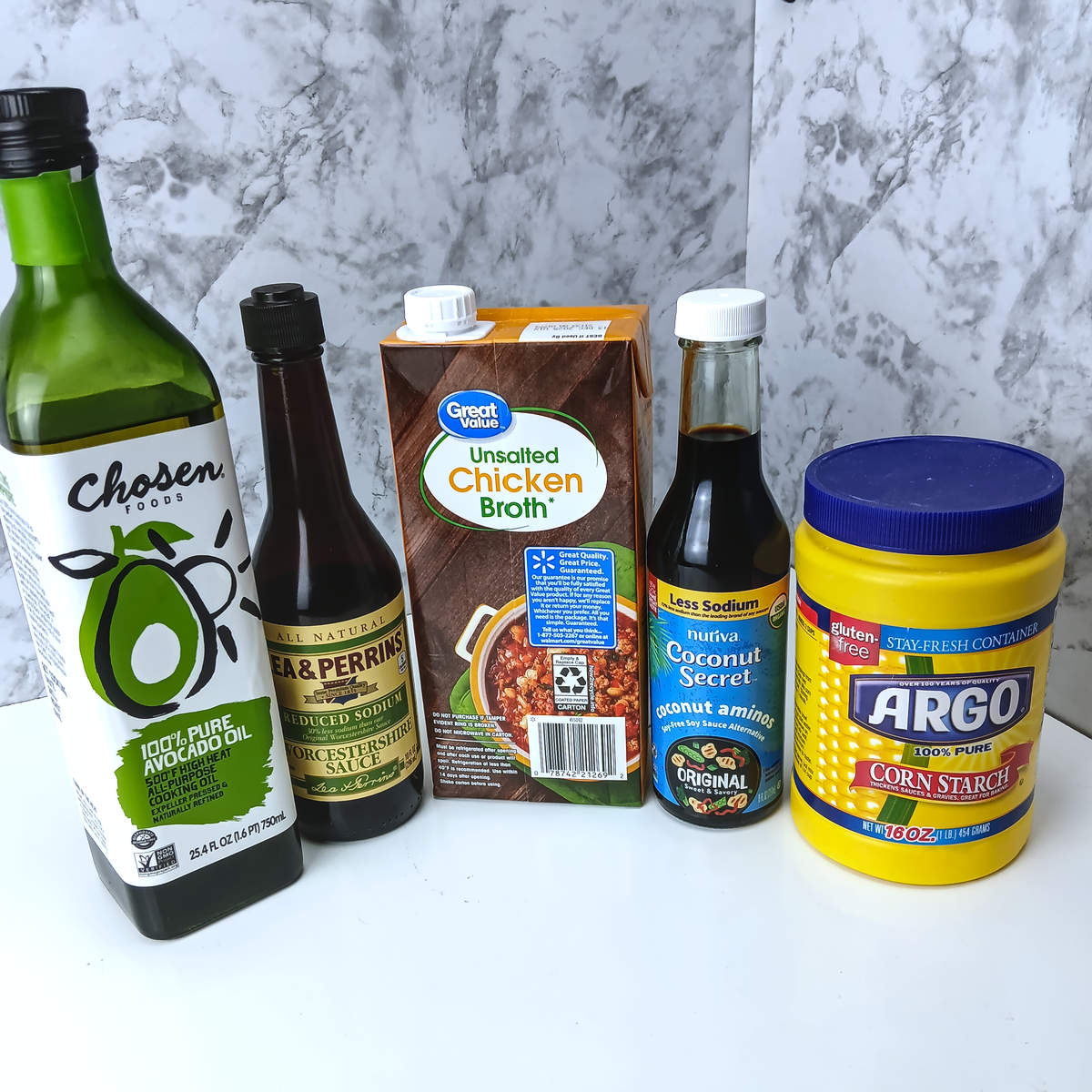
Marinade Ingredients:
- Chicken broth unsalted – A small amount of chicken broth adds moisture to the chicken and helps the flavored sauce to further tenderize and penetrate.
- Coconut aminos – You can sparingly use coconut aminos for a low sodium soy-free sauce for that unami taste. Sodium levels vary widely, so be sure to check the sodium levels, I found this one for 240mg per tablespoon.
- Worcestershire sauce – A very low sodium sauce that further enhances the unami taste.
- Cornstarch – Helps seal in moisture and creates a crusty thin crispy layer that later dissolves into the stir fry.
- Avacado oil – Oil moistens the meat and adds flavor. The chicken will benefit from a coating of oil since they are leaner meats. It also has a high smoke point and neutral taste.
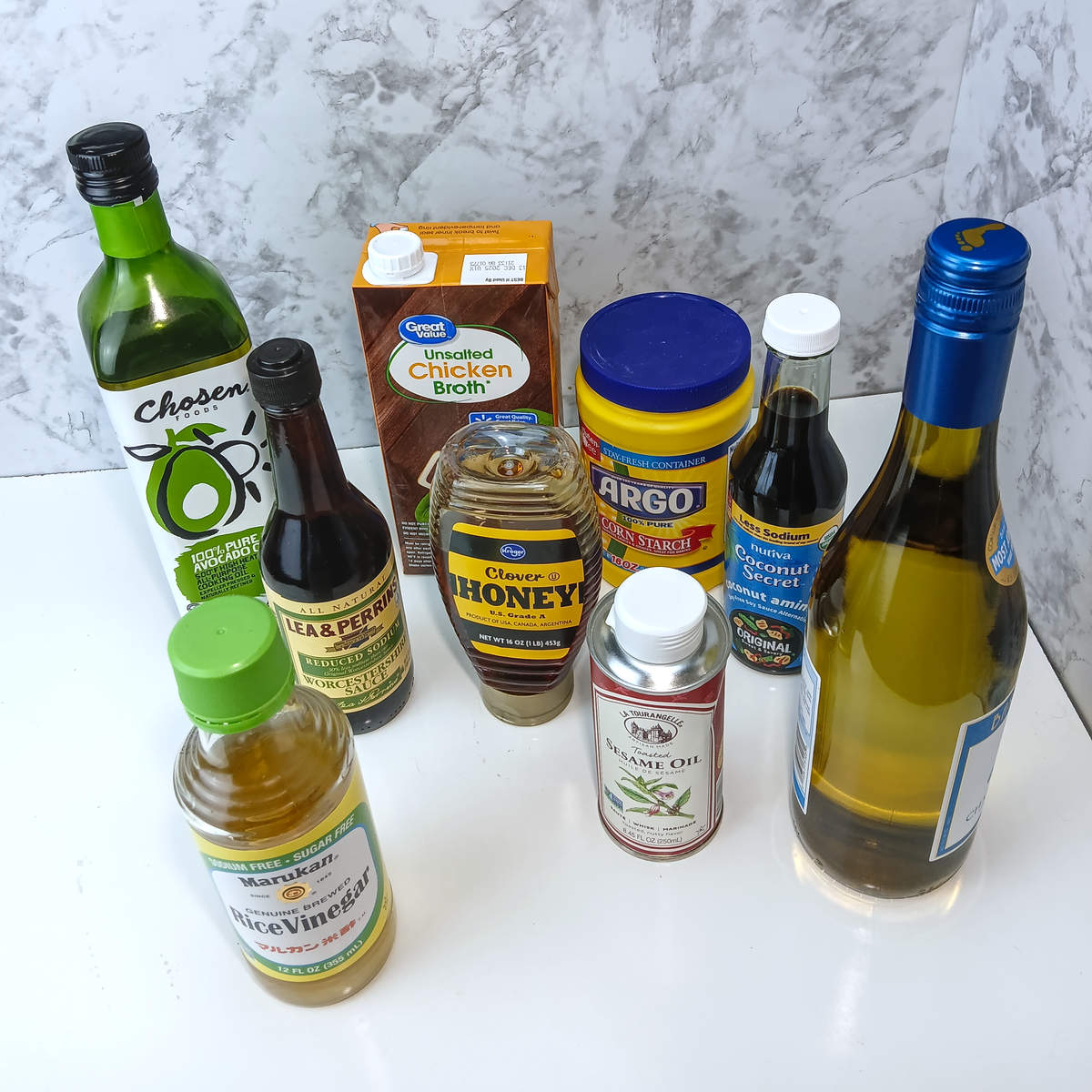
Stir Fry Sauce ingredients:
- Chicken broth unsalted – The base of this sauce and adds much more flavor than using water.
- Coconut aminos – You can sparingly use coconut aminos for a low sodium soy-free sauce for that unami taste.
- Worcestershire sauce – A very low sodium sauce that further enhances the unami taste.
- Sesame Oil – Just a teaspoon for a rich, nutty taste.
- Honey – A touch of natural sweetness to balance this savory sauce.
- Rice Vinegar unseasoned – You can substitute apple cider vinegar. Be sure to get unseasoned rice vinegar it should be 0mg’s as is the one pictured above.
- Balsamic reduction – A sweet and savory taste that brings lots of umami flavor.
- Cornstarch – Helps to make the sauce extra rich and thick to cling.
Find the full printable recipe with specific measurements below.
Equipment:
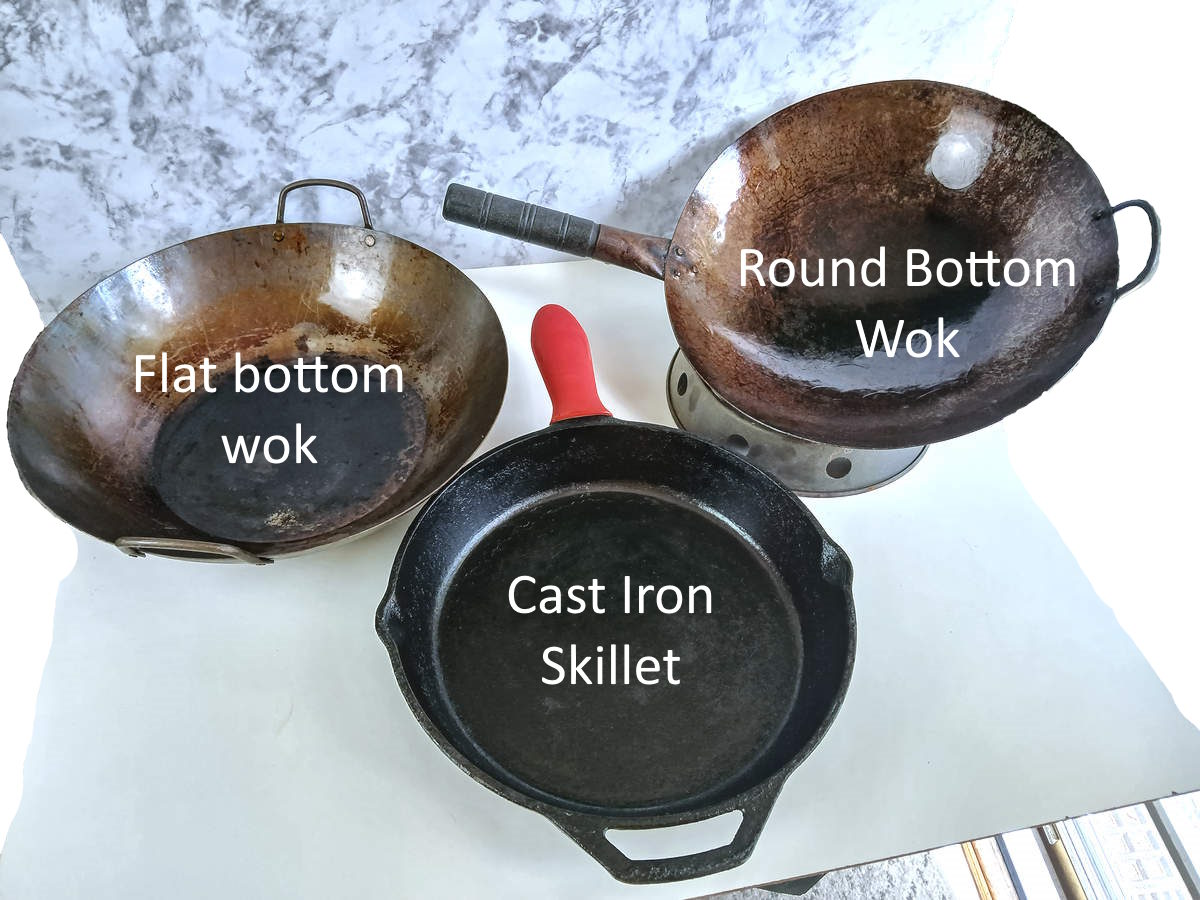
Flat Bottom wok: Best overall pan, perfect for electric burners, and can be used with gas.
Round bottom wok: Wok and ring works for gas stoves.
Large cast iron skillet: Electric and gas use – requires longer heating time to get rippin hot.
How to make:
One of the highlights of this recipe is the velvety tender chicken. Hence the name “velveting chicken” the Asian secret to creating that nearly indescribable tender velvet texture in your mouth. But don’t worry, it’s already done for you in the marinade!
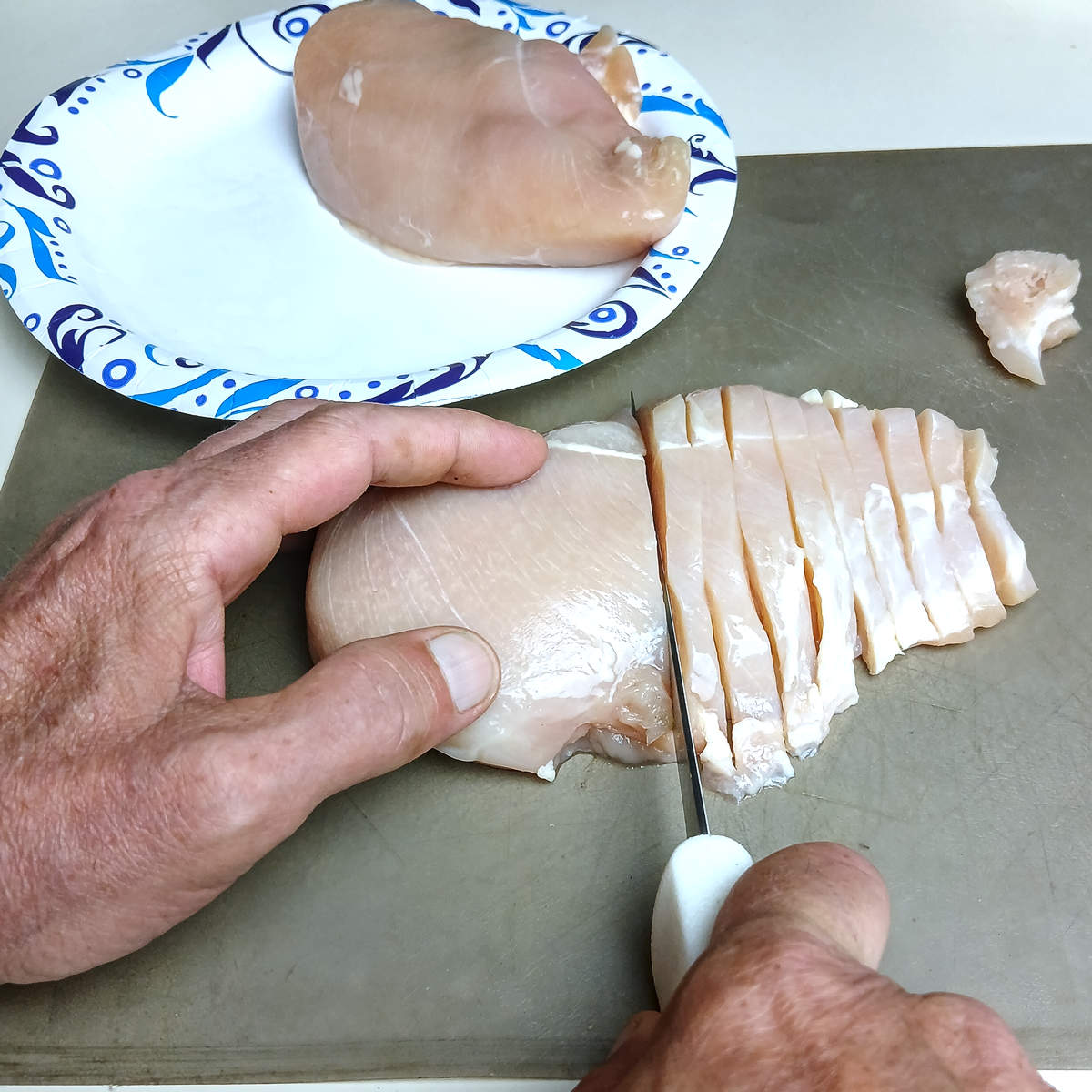
Step 1 – Make the stir fry marinade and stir fry sauce. Slice semi-frozen chicken into quarter inch slices against the grain. Place chicken in marinade till coated and set aside for 20 minutes. Meat should be at room temperature when you are ready to fry.
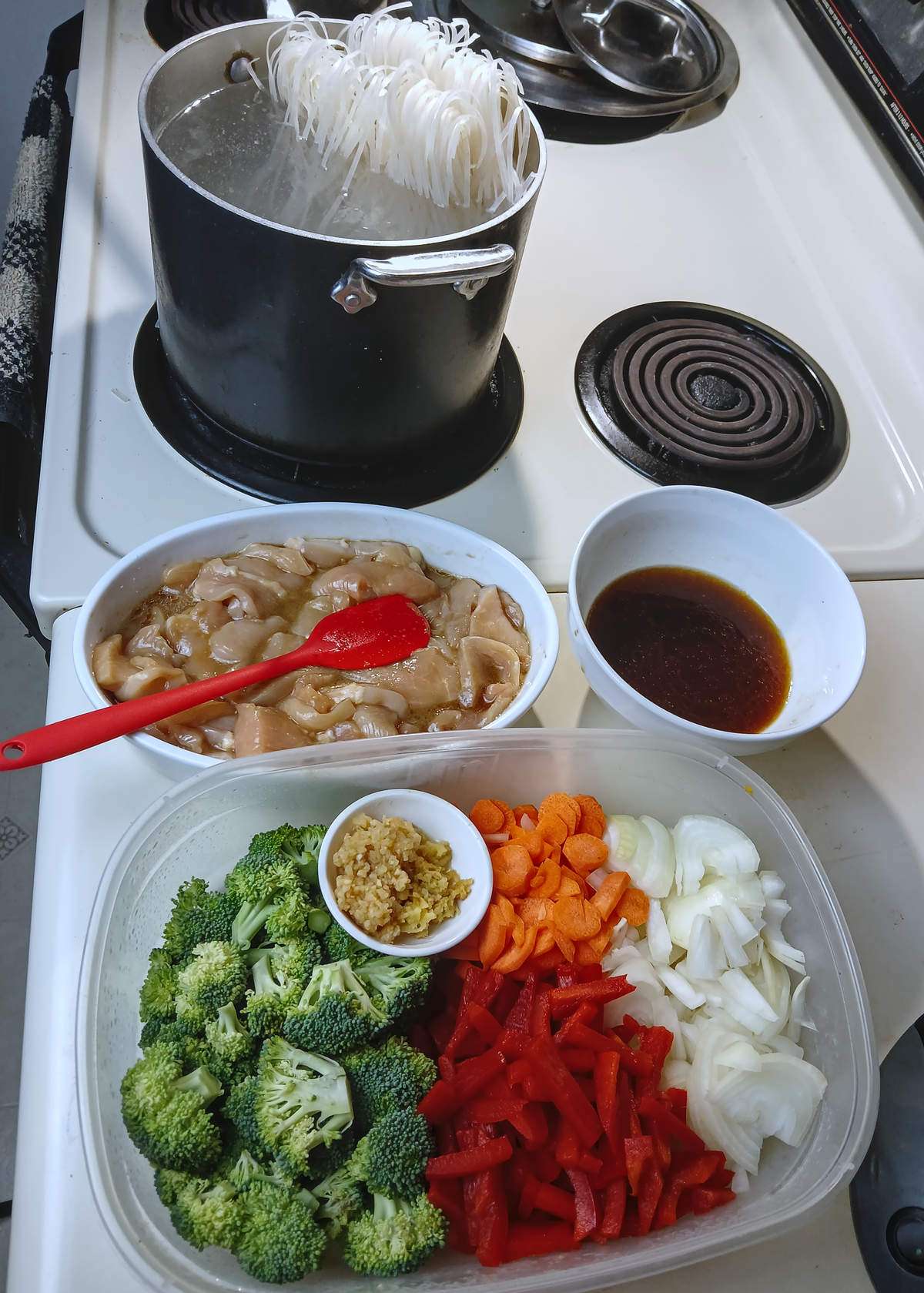
Step 2 – Start the rice noodles and colander out. Have all the ingredients mixed and cut within arms reach. You will be moving and mixing the ingredients during the fast cook time.
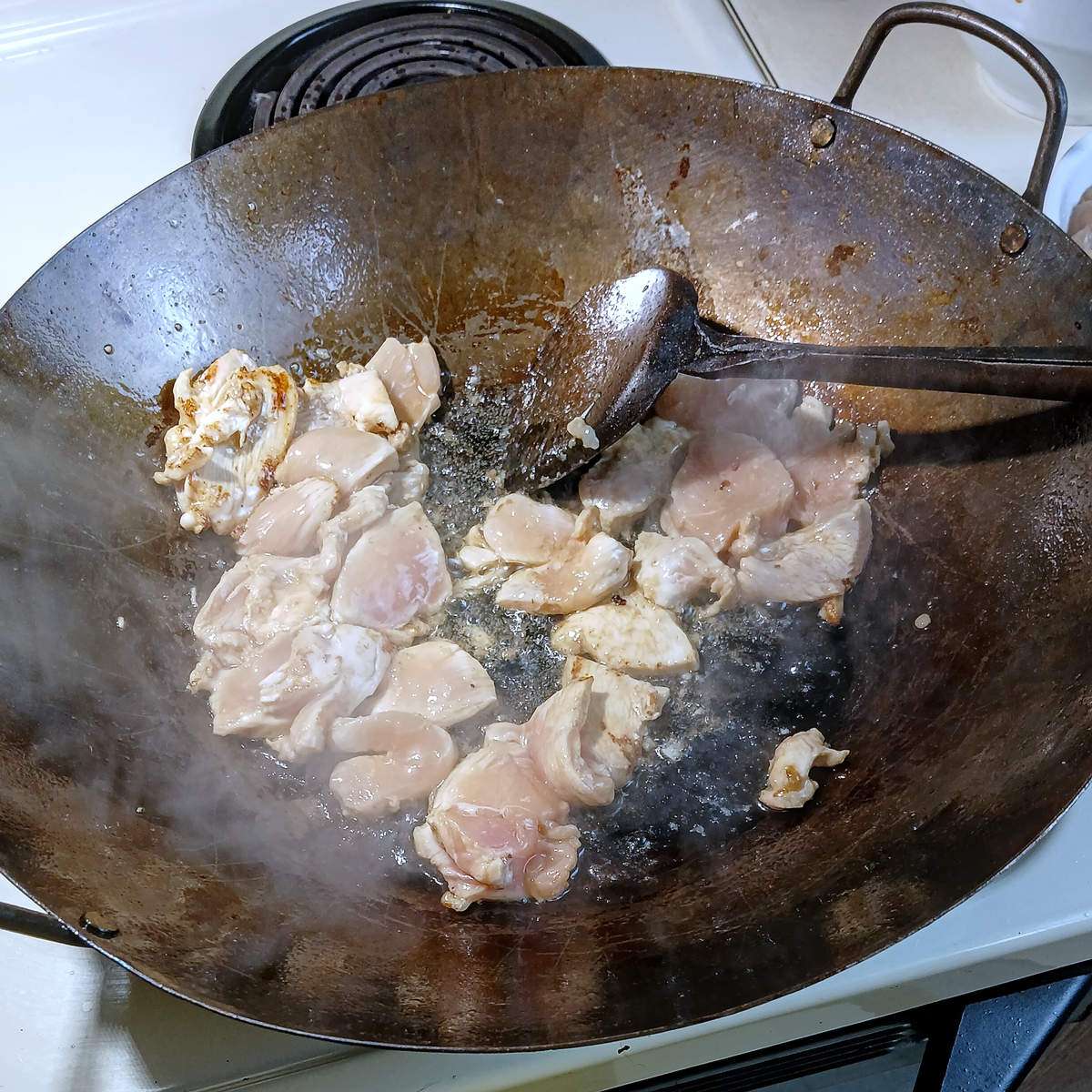
Step 3 – Add half the marinade coated chicken to the pan moving constantly. Fry until opaque, it should be just slightly underdone. Don’t worry, it will cook through in a few short minutes. remove from pan and repeat.
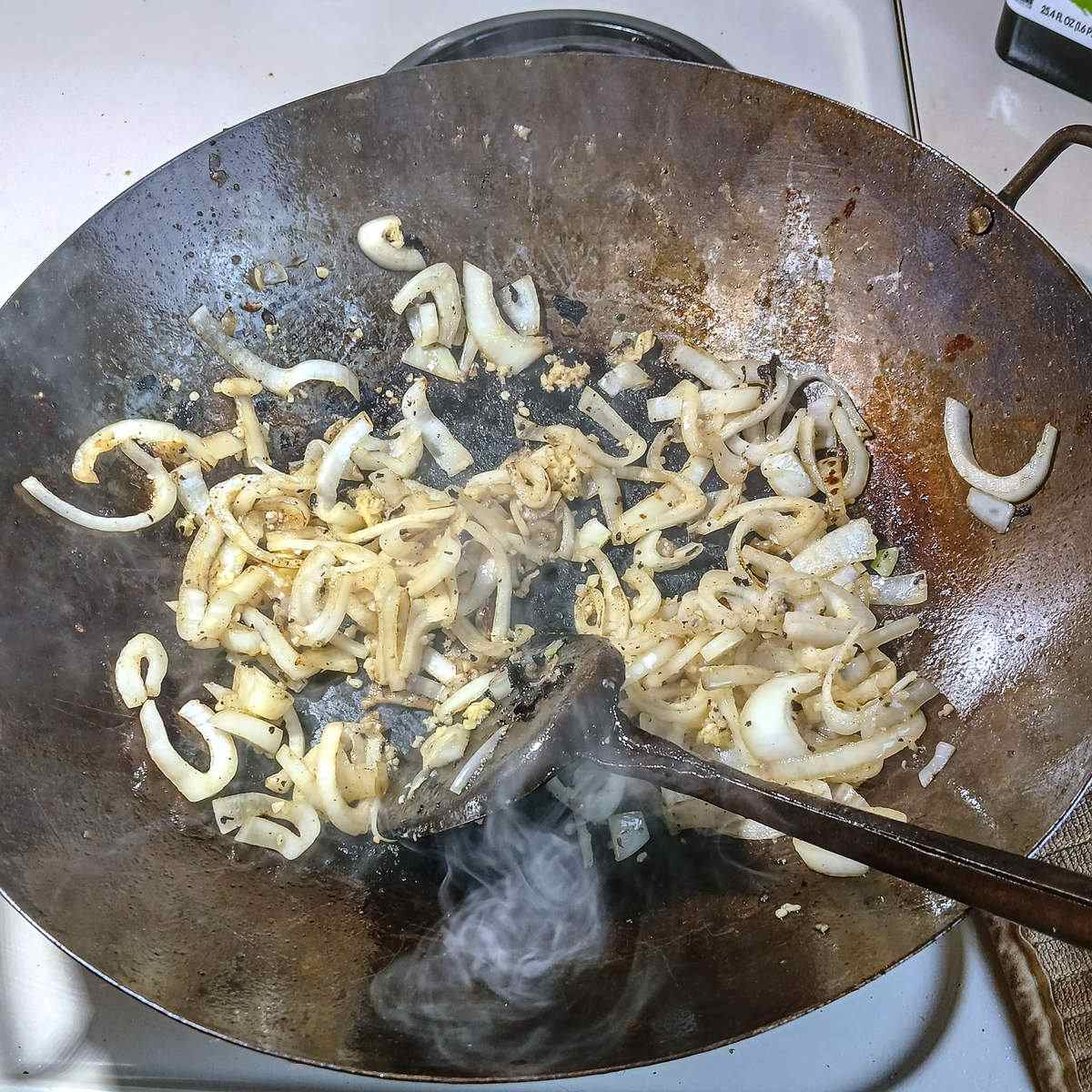
Step 4 – Drizzle towards the bottom of the pan and add onions. Cook for two minutes while stirring. Add garlic and ginger.
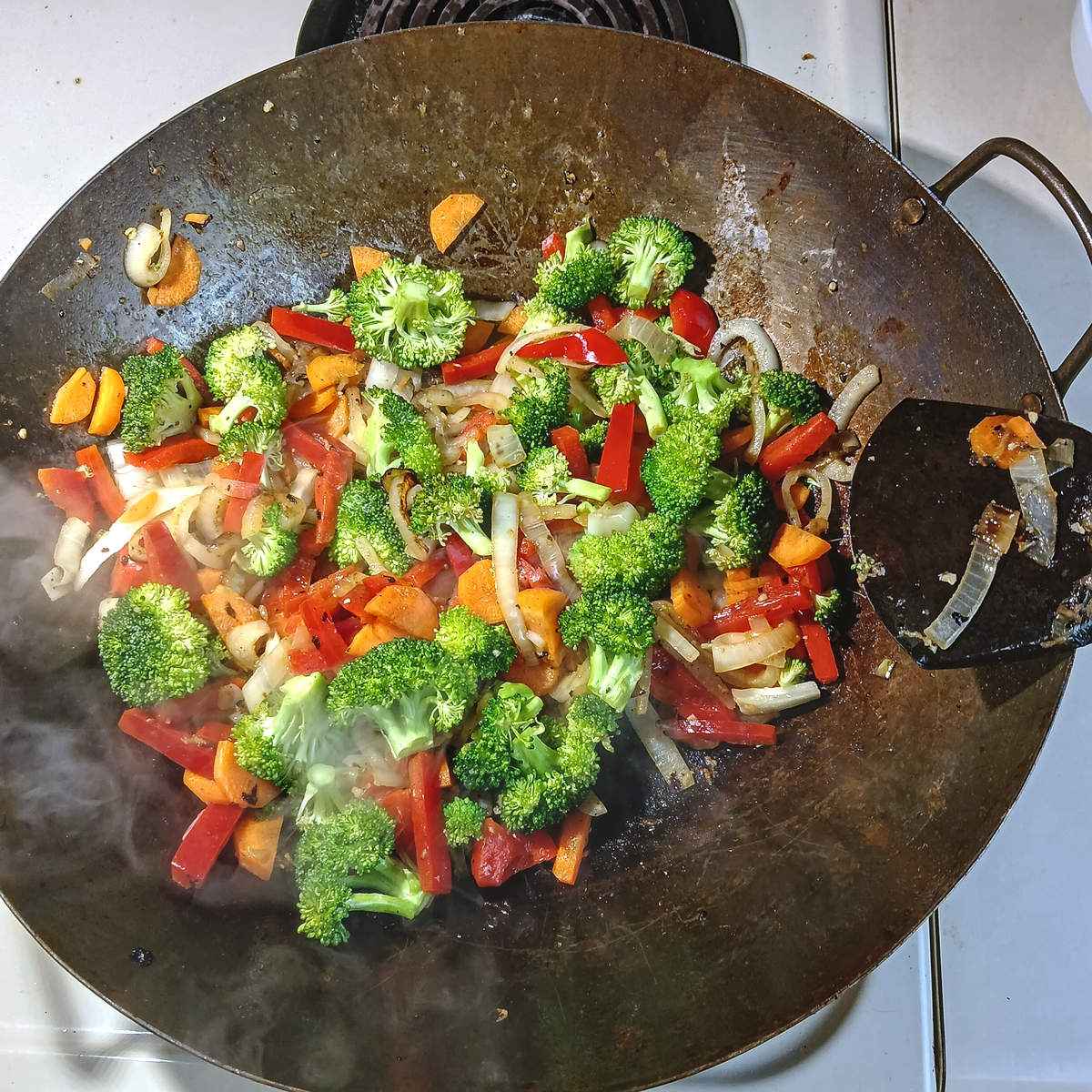
Step 5 – Add remaining veggies to the aromatics and cook 2-3 minutes again moving ingredients constantly.
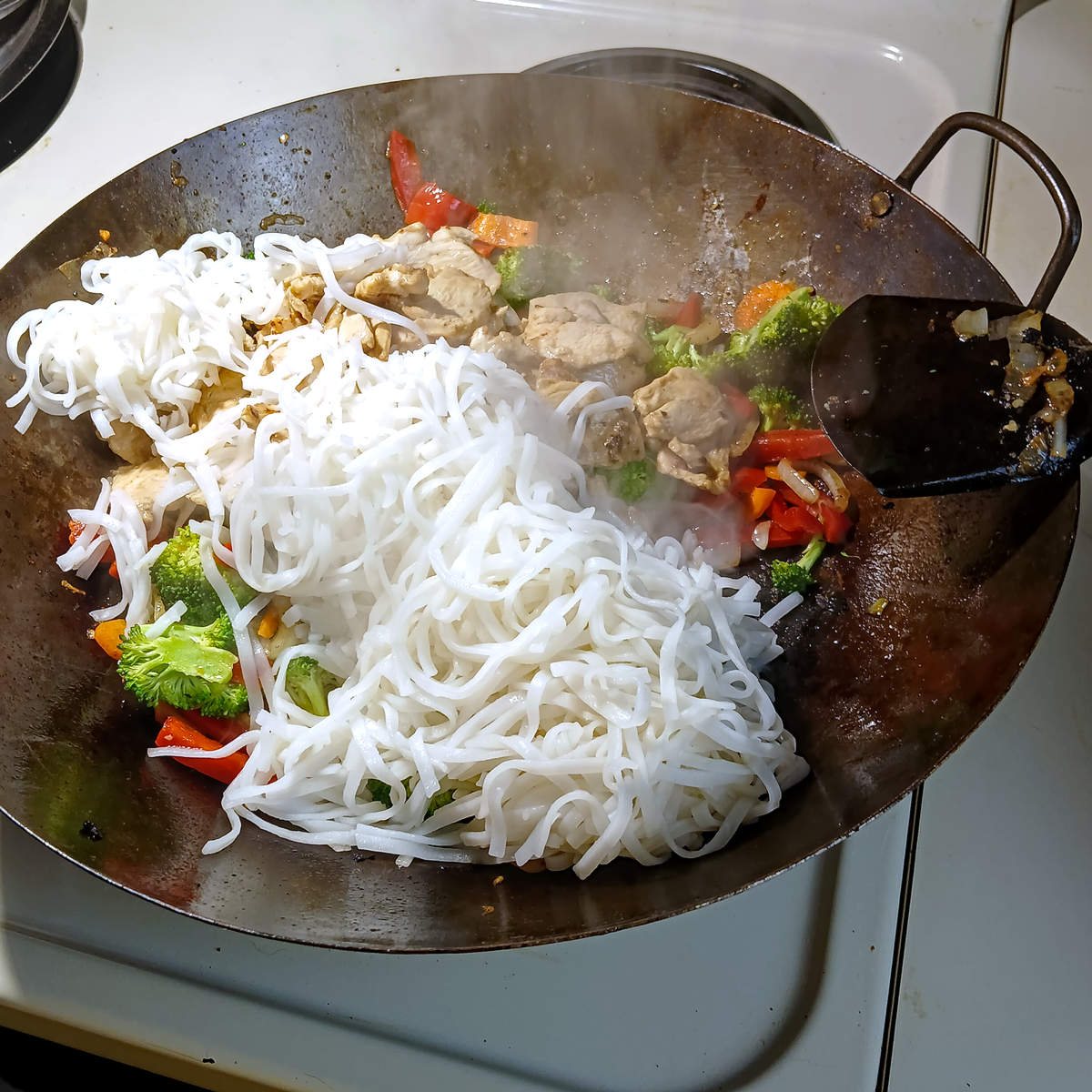
Step 6 – Add in drained noodles, chicken, and any juices. Stir to combine.
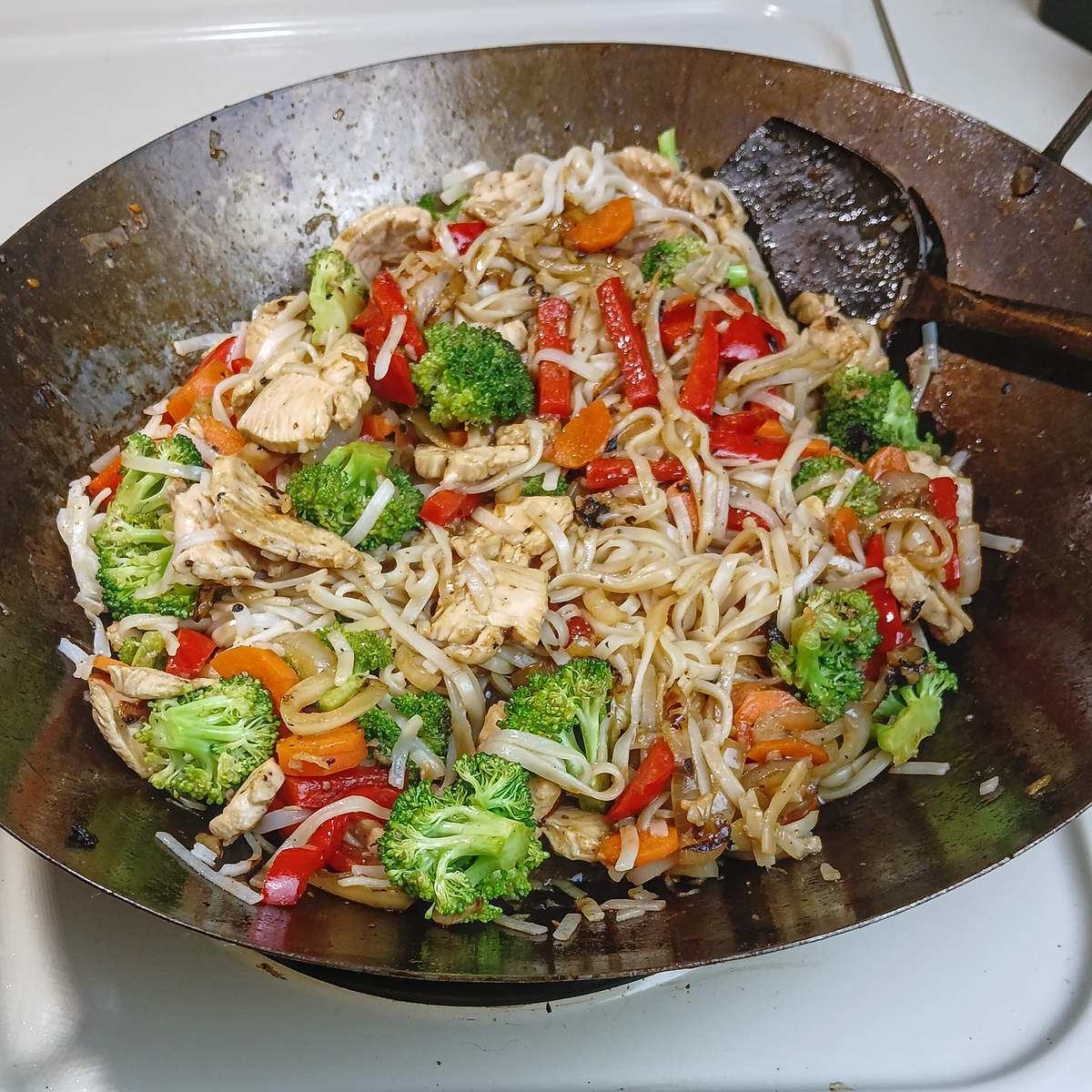
Step 7 – Continue to cook for two more minutes. Add sauce, stir to coat, and cook till sauce has thickened. Remove from heat. If using a cast iron skillet remove food from the pan.
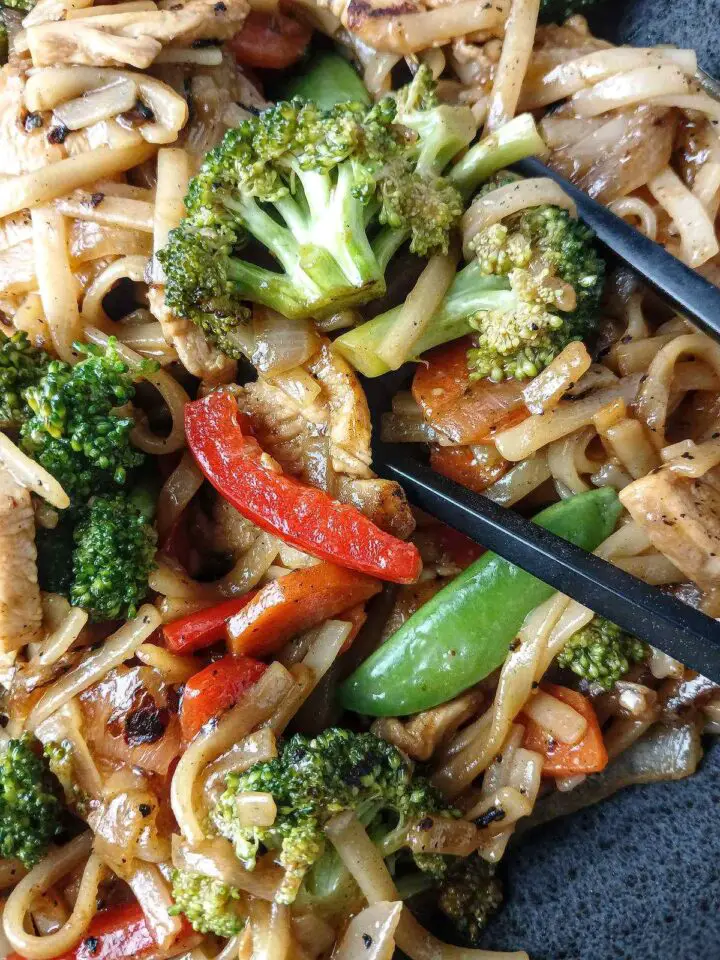
How To Store
What I like best about this recipe is that it makes the most delicious leftovers. You can cook this meal prep and eat almost all week long.
To store: Let leftovers cool before storing in airtight containers. Leftovers will keep in the fridge for about 4-5 days.
To freeze: The stir-fry can be frozen for up to 3 months in an airtight container. And yes, you can freeze it with the noodles or rice with it too!
Reheating
Low sodium stir fry can be reheated on a covered plate in the microwave for 2-3 minutes. Give it a stir about halfway through.
Serving
Low sodium stir fry can be served over rice or noodles as in this recipe. If you want to serve over rice just omit the noodles. Try having a low sodium egg drop soup on the side.
More easy Asian influenced recipes you’ll love!
This chicken stir-fry is just one of many chicken breast recipes to love. Give these easy and flavorful dinner ideas a try!
FAQ’s about low-sodium stir fry
Velveting! It is a crucial step when preparing chicken breast for stir-frying. Adding cornstarch to the marinade gives the chicken that silky texture, while retaining moisture and flavor from the marinade. Velveting also protects the chicken from the hot wok, yielding juicy chicken.
Trying to slice chicken uniformly when it’s loose and slippery can be aggravating even with a sharp knife! Before slicing them, I remove them from the packaging place them on a paper plate, and pop them in the freezer. Freeze until they are partially frozen (about 20 minutes) till firm but not solid.
Once they are firm, they are easy to slice into ½” thick uniform, perfect slices. Slice against the grain for more tender bites.
Make sure you keep things moving, one of the key features of a wok is that the sides are cooler than the center. So if you see your aromatics are burning then move them up on the side to spread the heat around a bit.
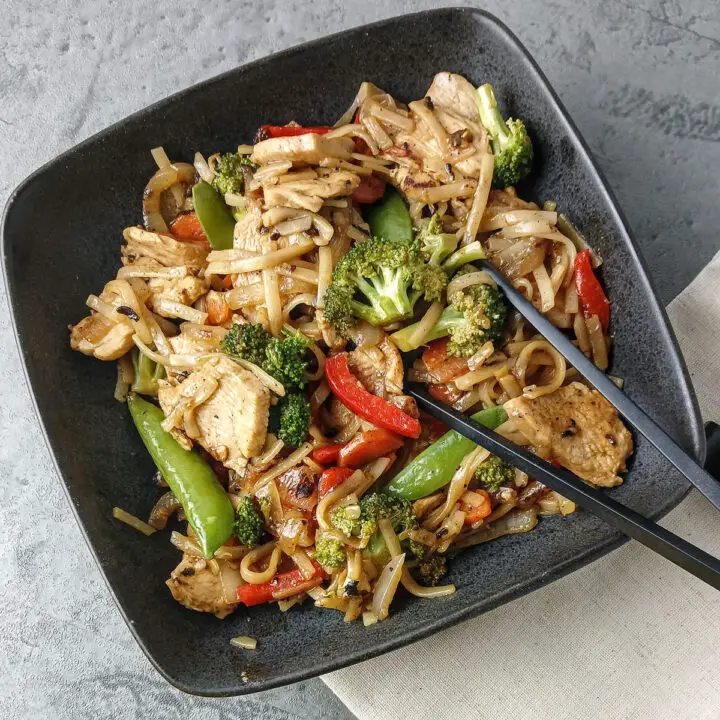
My tips for making Low-Sodium Chicken Stir Fry
- The number one mistake people make is preheating a pan with oil in it, wok or no wok. Never preheat a wok or pan with oil in it. Number one it is dangerous and second, oil will start breaking down over the long preheat period. Add oil (think of it as a light coating of oil for the pan, not the food) just before adding ingredients.
- Once you add your oil, immediately add your ingredients and work quickly. Stir-frying isn’t about taking it slow and low. You keep full heat the entire time and toss things rapidly. You should cook in batches from slowest cooking to quickest cooking.
- When you are stir frying you need to have all the ingredients cut and measured and within reach before you turn on the heat and start cooking.
If you make this Asian inspired recipe, please let me know how you like this Low Sodium Chicken Stir Fry in the comments! I get motivated and am interested to learn about how you enjoyed and served this stir fry. You can also follow me on Facebook and Pinterest for when new recipes come out.
Low Sodium Chicken Stir Fry
Ingredients
Chicken Stir Fry:
- 7 oz rice noodles (omit if serving over rice)
- 1 lb skinless boneless chicken breasts2 (sliced into bite-sized strips)
- 1 red bell pepper (or 1/2 red and 1/2 green, sliced)
- 1 cup Snow peas
- 1 small carrot (thinly sliced)
- 2 cups broccoli florets (cut into bite-sized pieces)
- 1 medium yellow or white onion (slice and rough large chopped)
- 1 Tablespoon pre-minced garic
- 4 oz shiitake or portobello mushroom (sliced (optional))
- 1 Tablespoon fresh ginger (peeled and grated)
- 2 Tablespoon avocado oil
Chicken Marinade:
- 3 Tablespoon chicken broth unsalted (30-45ml)
- 2 teaspoons coconut aminos
- 2 teaspoons cornstarch
- 2 teaspoons avocado oil
Stir Fry Sauce:
- 1/2 cup chicken broth unsalted
- 1 Tablespoon low coconut aminos sauce
- 1 teaspoon sesame oil
- 1 Tablespoon balsamic reduction
- 2 teaspoon Lea and Perrins low sodium Worcestershire sauce
- 1 teaspoon rice vinegar unseasoned (or apple cider vinegar)
- 1 Tablespoon dry white wine (optional )
- 1 Tablespoon honey
- 1 Tablespoon cornstarch
Garnish
- 1 Tablespoon sesame seeds
- green onions chopped (to taste)
- 1 teaspoon hot chili flakes (optional – for a touch of heat)
Preparation
- Make the marinade and stir fry sauce. Slice chicken2 and add to marinade for 20 minutes. Cut and chop vegetables. Most of this can be done while waiting for the noodle water to boil and they are cooking.
- Bring medium size pot of unsalted water to a boil. Add noodles and cook them per package directions or until barely tender. Drain most of the water and let stand, set aside..
- In a large wok or skillet preheated on high add 1 tablespoons of avacado oil to coat pan. Immediately place half the marinated chicken into the hot skillet1 and stir-fry about 3 minutes or until opaque and barely cooked through. Remove from the skillet and set aside. Repeat with other half. Chicken will be cooked again in the final fry.
- Drizzle a 2 teaspoons of avacado oil towards the bottom of the pan and add onions. Cook for two minutes while stirring. Add garlic and ginger cook for a little over 30 seconds. Add remaining veggies to the aromatics and cook 2-3 minutes again moving ingredients constantly.
- Reduce heat to medium. Add chicken and any juices, fully drained noodles and stir-fry for 3 minutes (mixing and moving) or until chicken is hot and fully cooked through. Add stir fry sauce and cook till thickened and the sauce is clingy.
- For garnish sprinkle with sesame seeds or chives to taste. season with garlic powder and pepper as desired. Grab a fork and enjoy!
Notes ______________________________________________
- When adding oil to the pan or along the sides and immediately add the ingredient to be cooked. Add just enough to coat the pan not the food.
- Freeze chicken on a plate until they are partially frozen (about 20 minutes) till firm but not solid. Once they are firm, they are easy to slice into ½” thick uniform, perfect slices. Slice against the grain for more tender bites.
- Makes 4 = servings. Nutrition calculations include the rice noodles.
Utensils & special ingredients used
I use, own and recommend these products and ingredients used in this recipe and I may earn commissions from qualifying purchases.
Nutrition
The information shown is an estimate provided by an online nutrition calculator. It should not be considered a substitute for a professional nutritionist’s advice. Please understand that not everyone’s sodium and dietary requirements are the same, therefore some recipes may be higher than you’re allowed.
https://tastyhealthyheartrecipes.com/main-dishes/entrees/low-sodium-chicken-stir-fry/© 2025 Tasty Healthy Heart Recipes
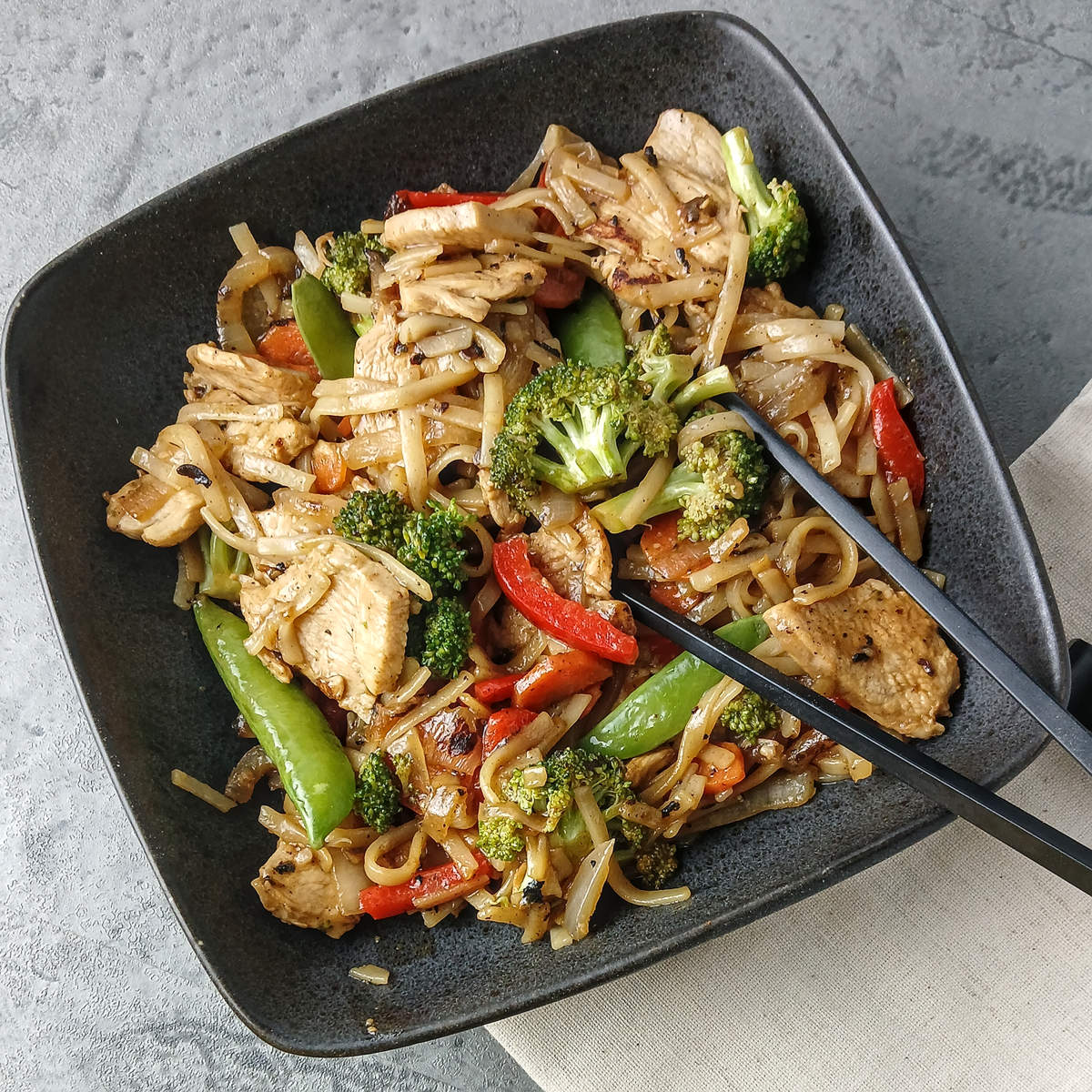

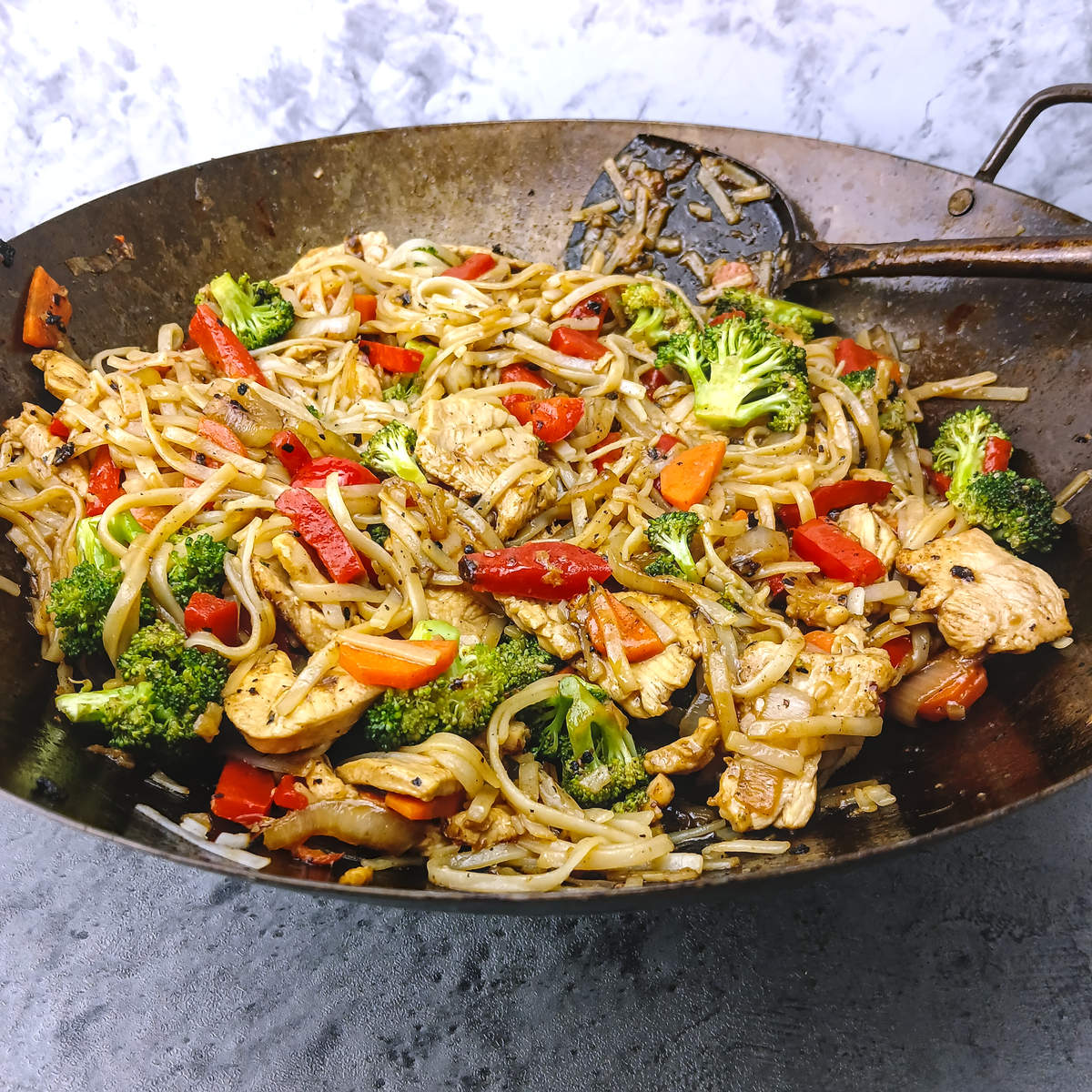
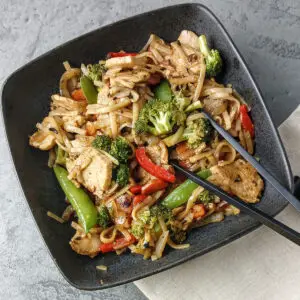
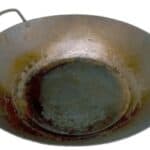



I used low sodium tamari as I had it but am happy to find the much lower sodium coconut aminos and added it to my Walmart order. I was out of a couple sauce ingredients. Also, I made it vegan. However, it still had great flavor. This is going to be my go-to stir fry sauce. So glad to find this recipe as I love this cuisine but have been avoiding it because of the high sodium.
Thanks DJ, I too love this cuisine, but it is rather hard to replicate a low sodium version. Stay tuned though. I have a recipe planned (coming soon) that may be a game changer. Regards, Bill